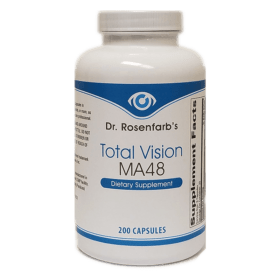Optic nerve atrophy, also known as optic neuropathy, is simply defined, as the end result of any disease that damages nerve cells anywhere between the retina and a part of the thalamus that links the eye to the brain. Optic nerve atrophy is the condition wherein the optic nerve is limited in its capacity to transmit information accurately. While there are different causes associated with this disorder, the end result is the same, which is a degeneration, or “wasting away,” of the nerve. Onset can occur from birth through adulthood.
When the ophthalmologist looks in your eye she can see that the pale optic nerve is visibly atrophied and looks pale. It has partially or seriously wasted away resulting in partial or serious loss or change in vision.
Types of Optic Neuropathy:
In practice, optic neuropathy is not considered a disease, but rather a sign or symptom of potentially many disease processes. It is closely associated with a group of conditions, some of which are genetically based, while others are due to lifestyle considerations, such as chronic systemic inflammation, trauma, toxins, poor blood flow, and/or a lack of essential nutrients getting to the optic nerve. Thus, the prevalence of optic nerve atrophy depends on the prevalence of an underlying cause.
Ischemic optic neuropathy is caused by insufficient blood flow with an occlusion in blood supply vessels. It occurs in adults and is described as a “stroke” of the optic nerve. One type, arteritic anterior ischemic optic neuropathy, is an ophthalmic emergency. The other non-arteritic type involves swelling, which typically lessens over time, but vision does not improve.
Optic neuritis is caused by an inflamed optic nerve. In compressive optic neuropathy, lesions cause the optic nerve to become compressed. A similar condition in appearance is glaucomatous optic neuropathy.
Infiltrative optic neuropathy occurs when the tumors or an inflammatory process invades the nerve or the space around it. Traumatic optic neuropathy develops after direct or indirect injury to the eye or sometimes to the back of the head.
Mitochondria optic neuropathy involves a failure in mitochondria functioning.
Nutritional optic neuropathy occurs when nutritional deficiencies cause severe problems.
Toxic optic neuropathy arises due to damage from various poisons, toxins, and some drugs.
Hereditary optic neuropathy is caused by genetic mutations, including Leber’s hereditary optic neuropathy.
Optic nerve atrophy type 1 appears in childhood, or during puberty, with visual loss that progresses during puberty until adulthood. The subsequent progression is chronic and very slow. This is a complete and permanent breakdown of optic nerve fibers.
Recommended Supplements:
-

Total Vision MA48
$55.00 Add to cart -
Sale!

Hydro Vision – H2 Vision – Molecular Hydrogen Tablets
Original price was: $60.00.$49.00Current price is: $49.00. Add to cart -

CannaVision Oil 2500mg
$99.00 Add to cart -

LipoVision-DHA
$30.00 Add to cart -

Neuro Vision
$70.00 Add to cart -

CannaVision Oil 5000MG
$149.00 Add to cart


